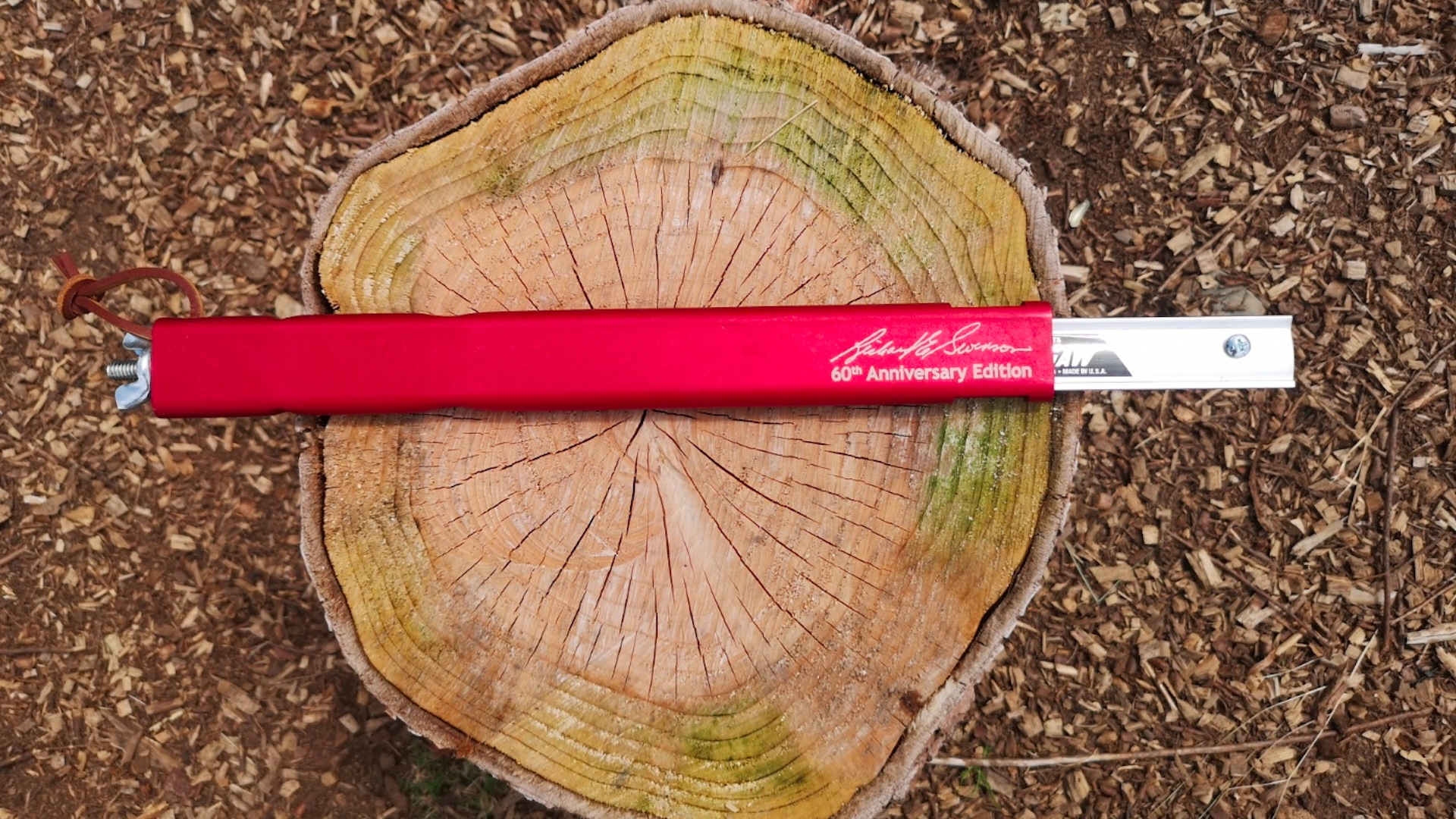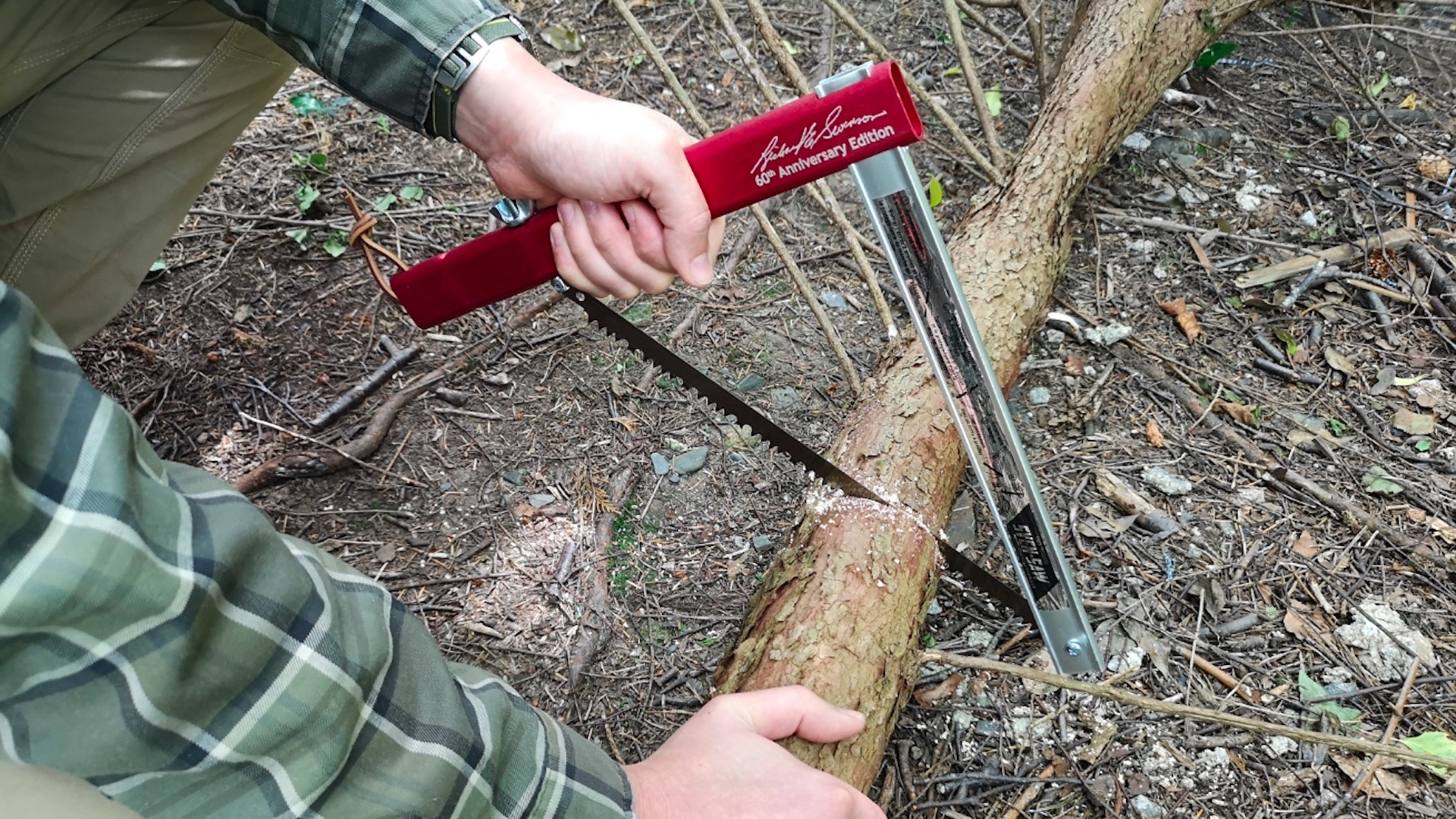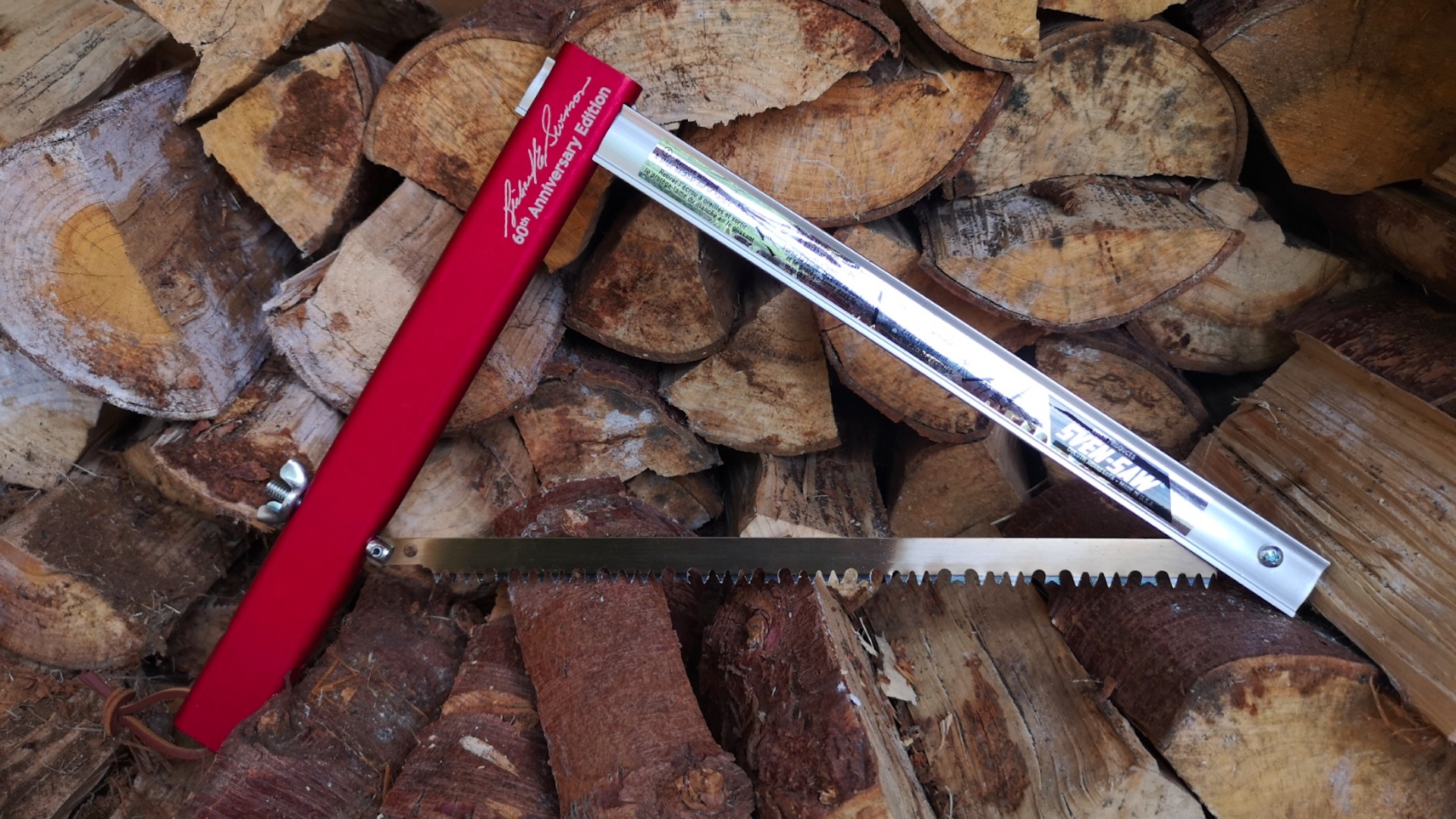Advnture Verdict
If we were going on an extended camping or canoeing trip, or setting up a semi-permanent base camp in the wilderness, this would be our top pick of all the saws out there. Reasonably light and compact yet extremely capable, it is able to process large diameter logs quickly and efficiently.
Pros
- +
Strong and robust design
- +
Can handle big branches and logs
- +
Cuts in both directions
- +
Blade rarely jams and never clogs
- +
Supplied with leather lanyard
Cons
- -
A little heavier and bulkier to carry than a folding saw
- -
Requires some assembly
You can trust Advnture
Sven-Saw: first impressions
Like almost all great products, the Sven-Saw has a similarly great origin story. Back in 1960, its inventor Richard Swenson took a canoeing trip with his brother in the Boundary Waters Canoe Area Wilderness on the Minnesota-Canadian border. They came across two men on their way out, one limping on a bandaged foot. He’d cut his foot badly with an ax and was on his way to hospital (you can be prepared for similar mishaps with the best first aid kits for hiking, backpacking and camping). That got Richard thinking about building a better – and safer – wilderness tool.
The result was the Sven-Saw, a collapsible bow saw with a strong-but-lightweight aluminum frame and a high-quality Swedish steel blade. The design breaks down into a slim, compact package, with the blade completely covered and protected inside the handle. The company are still making the Sven-Saw today, and it continues to be family-owned and operated, with all parts proudly manufactured and packaged in Minnesota, USA.

Now, there’s no better test than the test of time, so if a product has been successful for over 60 years, it’s clearly a well-designed and well-made bit of kit. The current model is a handsome beast too, with a red anodized aluminum handle marked with Richard Swenson’s signature and “60th anniversary edition” text. The anodizing protects the metal from wear and tear as well as corrosion, while the eye-catching color ought to help ensure it doesn’t get lost around camp, even if the saw gets misplaced in long grass or undergrowth.
The blade is made from high-quality Swedish carbon steel and is easily replaceable. The Sven-Saw is available in 15-inch and 21-inch sizes, which means there’s a saw for you whether you need maximum cutting power for larger diameter logs or prefer a slightly smaller saw for added convenience and portability.
But how did it fare under test conditions for our best camping saw buying guide? Read on…
• RRP: 15in saw $41.99 (US) / £40 (UK); 21in saw $44.99 (US) / £45 (UK)
• Weight: 15in saw 312g / 11oz ; 21in saw 388g / 13.7
• Blade length: 38cm / 15in; 52cm / 21in
• Collapsed length: 15in saw 44cm / 17.25in; 21in saw 58cm / 23in
• Teeth per inch: 4
• Blade: Swedish carbon steel
• Lanyard: Leather
Sven-Saw: in the field

When packed away, the Sven-Saw is longer than a folding saw, but the clever collapsible design means it is also slim and compact, so we found it slides neatly into a rucksack, whether you prefer to stow it in the main compartment or a side pocket. The 15-inch size slots easily inside a daypack, while the larger 21-inch saw will fit inside a typical 40-liter hiking backpack.
Assembly is also easy, and after familiarizing ourselves with the process, we could soon do it in under a minute. You simply unscrew the wing nut, slide out the inner frame, unfold the blade and then slot the end of the frame and the blade retaining bolt simultaneously into the red anodized frame. Screw the wing nut back on and the saw is ready to use. Disassembly is the same process in reverse – simple.
All the latest inspiration, tips and guides to help you plan your next Advnture!
The triangular aluminum frame is lightweight yet strong, with no play. It holds the steel bow saw blade firmly and securely. This has a peg and raker tooth pattern, primarily designed for ripping through wet or freshly fallen wood. The triangular teeth do the cutting on both push and pull strokes, while the rakers chip the wood out. This ensures the blade rarely jams or clogs with sap and sawdust.

The thin bow saw blade also makes for very clean cuts, and both sizes of the Sven-Saw are able to deal with larger diameter branches than any of the other saws we tested. The 21-incher in particular makes fast work of bigger logs.
This swift cutting action ensures less fatigue when used for extended periods. It’s comfortable to work with too; the handle’s anodized finish also stops it from getting too slippery. Perhaps some sort of rubberized overlay might provide additional grip – though that would, of course, also add weight. Otherwise, the only thing worth being mindful of is not to lose the wing nut. Thoughtfully, the brand provides a spare with every saw.
Overall, we like the Sven-Saw an awful lot. It is very versatile, immensely practical and performs impressively in the field. It has few downsides, other than a little added weight and length over a folding saw. Obviously, a triangular bow saw can’t get into tight spaces like a folding saw.
The flipside is that you get considerably more cutting power, which makes this a great choice for processing lots of firewood quickly (it’s also handy to know the best trees for firewood). It’s perfect for group camps and base camps, whether you’re backpacking, canoeing, hunting or fishing.
An outdoors writer and editor, Matt Jones has been testing kit in the field for nearly a decade. Having worked for both the Ramblers and the Scouts, he knows one or two things about walking and camping, and loves all things adventure, particularly long-distance backpacking, wild camping and climbing mountains – especially in Wales. He’s based in Snowdonia and last year thru-hiked the Cambrian Way, which runs for 298 miles from Cardiff to Conwy, with a total ascent of 73,700 feet – that’s nearly 2½ times the height of Everest. Follow Matt on Instagram and Twitter.


